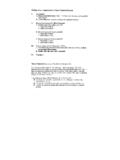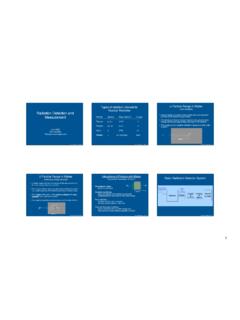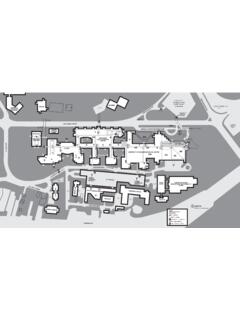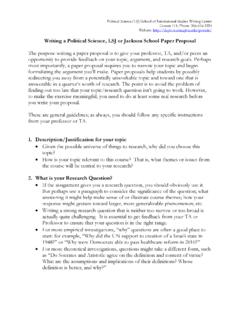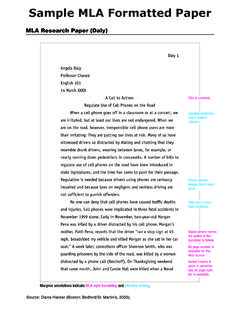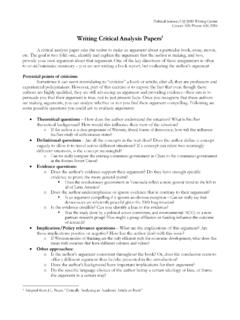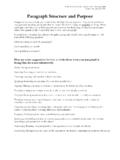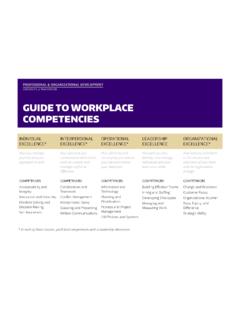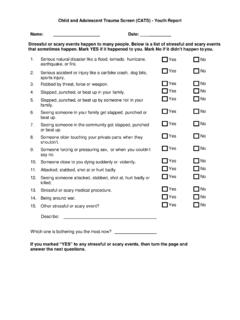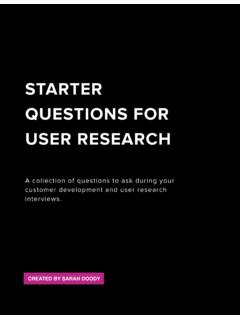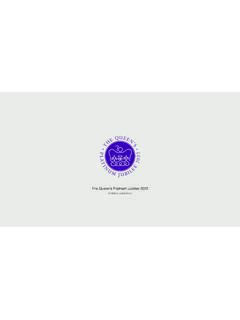Transcription of QUALITATIVE METHODS: CONDUCTING INTERVIEWS AND …
1 QUALITATIVE METHODS: CONDUCTING INTERVIEWS AND FOCUS GROUPS Kate Murray & Michele Andrasik University of Washington Agenda What are INTERVIEWS & focus groups Discussion/ interview guides Logistical planning Facilitation skills Body language Reflective listening Guiding conversations Practice!!! interview Focus Group Complex subject matter and knowledgeable respondents, Promote discussion between participants on a specific topic When interviewing one person at a time will yield the best info (ex. sensitive topics) When interaction among interviewees will yield the best info (ex.)
2 Community norms) When interviewees are unique or may be in conflict with each other When interviewees are similar and cooperative with each other When interviewees are being asked about information that they are unlikely to give in a group of people that they don t already know (ex. when peer pressure or social desirability are a threat) When individuals might be reluctant to give info one-on-one (ex. good for idea generation, problem identification and definition, evaluating messages for an intervention) INTERVIEWS Type of interview : Informal, Unstructured, Semi-structured, Structured Telephone, face-to-face 4 Advantages.
3 Most in-depth Collect information about why behaviors are practiced, how people think, and conceptualizations of behavior Gain knowledge of exact words/language people use Emic (insider) perspective Disadvantages Based on a few people INTERVIEWS very long, lots of data, time consuming to analyze Need people who aren t hesitant to speak and share ideas Focus Groups Optimal size: 6-10 How many people do I recruit for each focus group? Rule of thumb: more than you need (2x) 5 Advantages: Some people are more comfortable and talk more openly in group settings Natural way some people talk about problems and personal issues in some cultures (BUT culturally dependent) Collects information on social norms (ex.)
4 Norms around concurrent sexual relationships) Good for feedback on materials, campaigns, etc. Disadvantages Difficulty to assess practice of personal or sensitive behaviors in groups, may only learn about behavior that people will admit in front of others Individual behavior when it s unique will be subsumed by group behavior Transcription is time consuming, difficult to identify speakers, analytic challenge Participant Observation When a researcher inserts themselves in social event or group under study and records observations Advantages: Deep detailed data Observations by outsider rather than self-reported data Disadvantages Difficult to systematically collect data, especially in middle of important moment Hard to take notes so details may be forgotten Ethical considerations: tell or not tell group being studied that it is a study FG.
5 Order of Operations Welcome Informed Consent Ground Rules Demographic questionnaires Start recorder Focus group discussion Stop recorder Thank you & Incentives Designing FG/ interview Guides Intro Information Opening Qs Body of interview Qs Closing Qs Facilitation Team Ex. FG with 2 Facilitators Clearly define each person s role ahead of time Primary Facilitator responsible for asking questions and keeping conversation on track Note-Taker/Back-up responsible for keeping track of topic coverage, noticing quiet participants, helping facilitator with logistics The Art of Open-Ended Questions Closed Open Tend to encourage a short or single-word answer, such as Yes/No.
6 Most survey questions are closed-ended. Have you been tested for HIV? Do you think giving your daughter the HPV vaccine is a good idea? The Art of Open-Ended Questions Designed to encourage a full, meaningful answer using the subject's own knowledge and/or feelings How do you feel about having an HIV test? What has your experience been like with having an HIV test? Tell me about your last HIV test. Open Closed Activity: Open-Ended Questions Develop 3 open-ended questions to use in a focus group/ interview guide for your project. Key starter phrases: What do you think Tell me How do you feel What was it like for Logistics: Space Visit the space Check acoustics Consider accessibility Ensure privacy Plan for transportation Make signs clear & discrete Logistics: Time How long will FG/ interview last?
7 Plan to start 15-20 minutes after tell pts to arrive Keep early arrivers busy (informed consent, demographics qs) What time is optimal to hold the FG/I? Logistics: Recording Bring 2 recorders (back up) Memory Microphone Extra batteries (insert new before interview ) Learn how to use it before your 1st interview Test ahead of time Check your recording afterwards Logistics: Food & Incentives When selecting: Think about your population Seek advice of local partners Use local vendors Food (Pros & Cons): Logistics, cost, etc. Incentives: Transportation $ Cash vs.
8 Gift cards Setting Ground Rules for FG Confidentiality: Try not to use names or tell personal stories What happens in FG stays in FG Try to use words that people will understand Respect other people s opinions Speak one at a time (and also speak loudly for the recording) Turn off cell phones Is there anything we should add? Considerations for working in another culture or language The quality of your data depends on: Highly skilled interviewers Highly skilled translators Knowledge and understanding of local context and language Recommendations: Work with trained interviewers or conduct training with them Include local interviewers on analytic team Include bilingual members on teams Facilitation skills Body Language: Body Open and inviting posture Be aware of your position in the room Avoid distracting motions (pacing, bouncing, tapping) Body Language: Face Body Language.
9 Face Keep facial expressions neutral Show that you are paying attention (nodding, verbal cues) without positively or negatively reinforcing answers Eye contact Body Language: Voice Practice projecting your voice Set the standard for how loud people need to speak to be heard on the recording Show interest with your voice Pace (moderate-not too fast or too slow) Reflective Listening A communication strategy involving two key steps: seeking to understand a speaker's idea offering the idea back to the speaker, to confirm the idea has been understood correctly Non-judgmental Non-directive Benefits: Check the accuracy of your interpretations Participant can offer more detail Summarize or elicit agreements or disagreements Use this to make a smooth transition to a new question or speaker Reflective Listening So what I hear you saying It sounds It sounds like a few of you feel that HIV testing is important for all women, including married women.
10 What do other people think? Guiding Conversations Give neutral responses and use neutral language Build transitions through questions Well designed guides will help do this Redirecting can be used Probes Tell me more about Does anyone else feel that way or feel differently? Redirecting How do you know how long to let someone talk before guiding them back to TOPIC? Can you tell me how that relates to [the topic]? Earlier you said [x], and can you tell me a little bit more about that? Activity: INTERVIEWS Pair up with someone new interview each other for 5-10 minutes (2x) Try to get to all of your questions Use reflective listening Use redirecting Probe Debrief Strategies to keep people engaged Treat your participants as experts Act as if you hearing what they are telling for the first time (even if it s the 20th)

